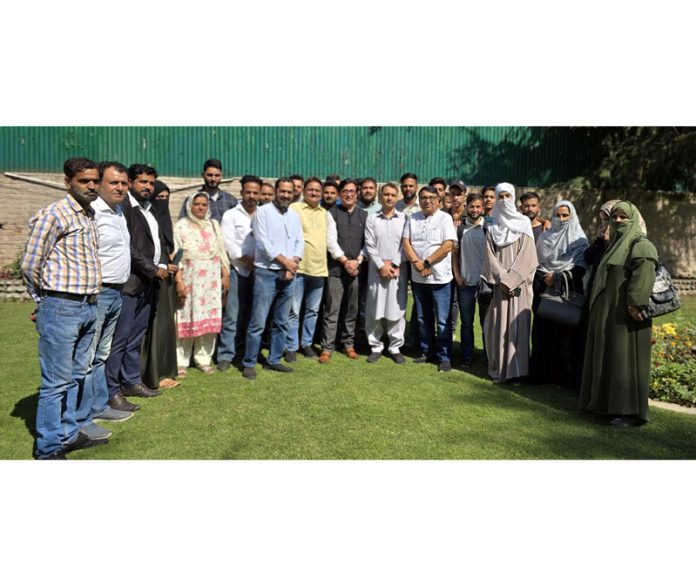After norovirus tore through the remote Kalalau campsite, campers and locals say it needs better management. Some of the campers who endured the recent norovirus outbreak at the end of Kauai’s famed Kalalau Trail hope the unusual incident, which sickened dozens of people, will lead to better state upkeep of one of the most scenic destinations in Hawaii. Specifically, they hope the state’s Department of Land and Natural Resources will use more of the permit fees collected by hikers and campers at Kalalau to help crack down on the frequent illegal visits and squatting that occur there, piling extra strain on the remote site’s limited resources and fragile environment.
They also hope state officials will increase the number of compostable toilets there from just three, do a better job keeping those toilets sanitary, post better educational signage across the campsite, and instruct hikers and campers how to alert public health officials if they come down with norovirus-like symptoms. “We go there every year, and a lot of people love this place because it’s so beautiful. We would really like to see some of the funding be allocated to keeping up with stuff like this,” said Jeff Gaughan, a Big Island resident who visited the site with friends over Labor Day weekend and watched the outbreak unfold.

“We don’t think it’s a big ask,” he said. The state charges Hawaii residents $25 and non-residents $35 per night to camp at Kalalau , and the site has an 80-person capacity. Gaughan and other campers, as well as Native Hawaiian lineal descendants of the Kalalau Valley, say that capacity at the campground is routinely exceeded.
They’ve previously asked the DLNR to deploy more staff and resources to maintain the grounds, remove the trash that accumulates, and discourage all the unpermitted visits and squatting. Regardless of what actually caused the recent norovirus outbreak, they hope the publicity from the incident helps lead to more effective DLNR management. Agency officials on Friday declined to discuss the potential for any such changes at the Kalalau section of the larger Napali Coast State Wilderness Park until after the state Department of Health finishes its environmental testing there and gets a better idea of what caused the outbreak.
“It (is) presumptuous to suggest a potential cause and unfair to presume parks management is somehow culpable,” DLNR spokesman Dan Dennison said in an email. “Let’s wait for the facts, please, at which point we’ll be prepared to say more.” The state agency is underfunded and understaffed as it tries to properly manage all of Hawaii’s public lands and waters, and it often relies on community partnerships to help fulfill its duties.
Some in the Kalalau community say their relationship with the state has been particularly strained. Meanwhile, the health department on Friday recommended that the full 11-mile hike along the Napali Coast be closed at least until Sept 19 as officials try to ensure public health and safety following the outbreak of an extremely contagious virus that can persist for two weeks on unclean surfaces. Initially on Tuesday, the DOH had recommended that only the camping area close, and that it be shut down for one week.
Norovirus is notorious for being extremely contagious and fast-spreading , and the virus thrives in areas that aren’t sanitary or well-cleaned. Its symptoms, which include nausea, chills, fever, vomiting and diarrhea, can start as early as 12 hours after infection but typically appear within one to two days, according to Nicole Mahealani Lum , a family medicine physician at the John A. Burns School of Medicine.
The virus spreads through fecal and vomit matter that can live on surfaces for around two weeks, and it’s often spread through contaminated food, Lum said. Those droplets can be microscopic, so while conditions for spread might sound disgusting, it actually doesn’t take much to pass the virus along, she said. It typically remains in a healthy person’s stools for two weeks after symptoms go away, but in some cases it can persist up to four weeks, she said.
For someone who’s immunocompromised, that infectious period can last several months, Lum said. Anyone who recently had norovirus should be discouraged from preparing food or caring for other people, she added. The way norovirus works and spreads make campgrounds such as Kalalau, with their limited access to hand washing and often close quarters in tents, particularly vulnerable spots to spread the bug, according to the health department.
There have been recent confirmed or suspected norovirus outbreaks at several other campsites on the mainland, including one that affected more than 200 backcountry hikers and rafters at the Grand Canyon in 2022 and a suspected outbreak at Zion National Park in Utah in July. Norovirus doesn’t pose a health danger by itself, but it can lead to lead to an emergency for people who have other medical conditions or are undergoing some sort of unusual stress or dehydration, Lum said. “Depending on the conditions, it might appear to be a bad situation,” Lum said.
When the symptoms hit, they typically hit fast and hard, she added. Gaughan said that almost as soon as his 13-member group arrived at Kalalau late Thursday, a camper from a neighboring group asked if they could spare any anti-nausea or anti-diarrhea medicine for his friend who was “super-sick.” By the next night, members of his own group started to fall ill.
By the time they left on Monday, Gaughan estimated that roughly a third of the visitors at the overcrowded campground had fallen ill. “It was like a war zone,” he said Thursday. “As people were dropping off and getting sick they were just going wherever they could get to.
Two of our crew didn’t even make it out of their tents in time before getting ill. It was pretty gruesome.” Hardly anyone made it to the lone, two-stall bathroom that was open at the camp’s north end, Gaughan added.
Mounds of toilet paper where people had relieved themselves were everywhere. More than half of Gaughan’s 13-member group eventually contracted norovirus during and after Labor Day weekend, including one person who grew so severely ill that she had to be airlifted to a nearby hospital. The group opted to leave a day earlier than planned on a friend’s boat to avoid anyone else potentially falling sick during the hike back, which is hazardous in some spots.
That turned out to be a good decision. Gaughan said several more members fell ill shortly after the group returned to Hanalei. Danielle Burr, the group member who was airlifted out, said that some of her friends placed rocks over the areas that were tainted with human waste.
The scene caused by the norovirus outbreak, she said, “raises the importance of keeping such a beautiful place in good condition.” Her group’s decision to return to Hanalei by boat was critical because “you can’t be on Crawler’s Ledge and be hit by this — you’ll actually die,” Burr said, referring to one of the hike’s steepest and most dangerous stretches. DOH officials weren’t available to discuss the situation Friday because its full team handling the situation was at Kalalau collecting water, soil and environmental swab samples, according to agency spokesperson Claudette Springer.
The agency had stated in a press release Tuesday that it found symptomatic cases suspected to be norovirus as far back as Aug. 14. Burr, who’s an occupational therapist and familiar with infectious disease, said that using an unofficial Kalalau Trail Facebook group with more than 32,000 members she was able to find other people who had visited Kalalau and reported falling ill with the same symptoms as far back as Aug 4.
On Thursday, at least six DLNR workers from the agency’s parks and conservation and resources enforcement division conducted what the agency said was routine maintenance at the Kalalau area already scheduled to occur that day. The workers bleached the bathroom areas, replaced lost signage, and collected two “sling-loads” worth of trash from the site to be airlifted out by helicopter, according to a Friday statement. Each load typically includes several hundred pounds of trash.
The agency said the two loads it collected represented a dramatic difference from a decade ago, when its helicopters would typically pull dozens of those loads out of the Kalalau Valley, indicating there are far fewer squatters hiding in the area. Gaughan said that his group encountered a mother living next to their campsite with her partner and their infant child, who appeared to be about 6 months old. The mother told members of his group, as well as a friend who camped there a month ago, that she had given birth to the child there.
Magan Wong, a Kauai resident and Native Hawaiian whose family traces its lineage to Kalalau, said that her family and other volunteers have done much of the work in recent years to convince long-term squatters to leave the area as part of their own efforts to clean up the area. During one of those volunteer cleanups several years ago, DLNR officers who met them there cited some group members for not having the proper permits, she said, which irked them and degraded their trust to work with the agency. “The state has mismanaged our parks,” Wong said Friday.
“Lots of times we’ve gone in there, it’s a shit show, literally, and they’ve gotten multiple complaints,” she said of DLNR. In a separate post to the same Facebook group Burr used to trace the norovirus outbreak, Wong wrote earlier this week: “I’m so sorry so many have had to experience getting sick in such a special place where so much planning is needed. We are born and raised here, and our kupuna (ancestors) are from Kalalau.
We wish we could go in more often than we do to clean and malama (care).” “We’ve made multiple complaints as well as requests to be part of the solution with the state.” It’s not clear when the health department will provide an update on its environmental testing.
Meanwhile, DLNR has warned that anyone who visits Kalalau during the closure or visits later without the proper permit could be arrested. We hope that our coverage provides you with the information to make informed decisions on issues that you care deeply about. Whether it’s affordable housing, education or the environment, these issues depend on your vote, and our ability to report on them depends on your support.
Make a gift today and help keep our news free and accessible for everyone . And if you’re able, please consider a monthly gift to support our work all year-round. Mahalo!.



















